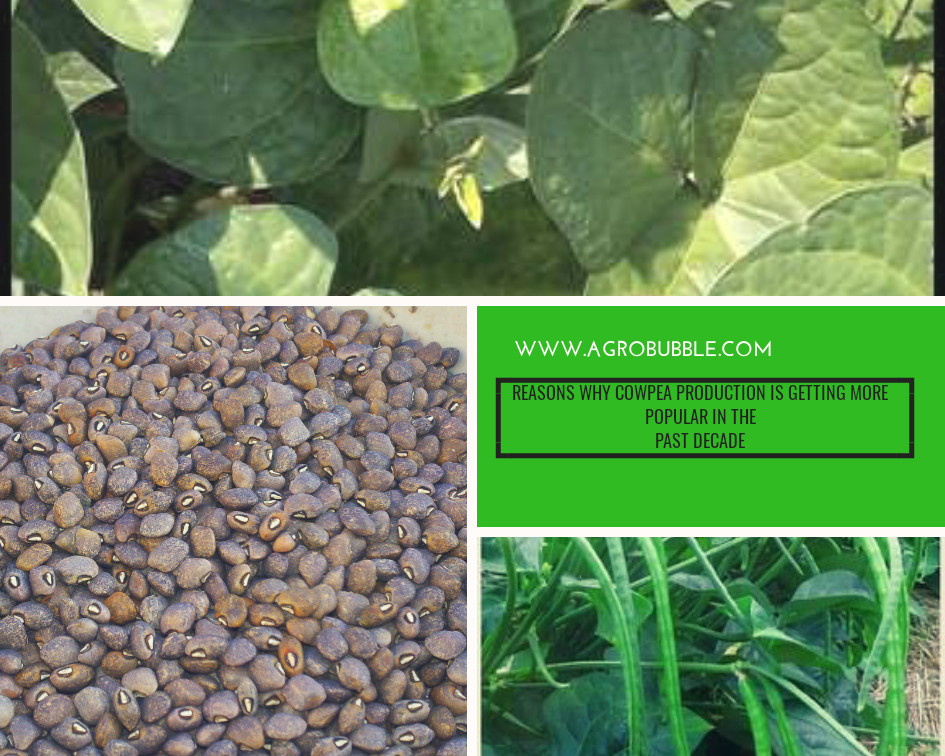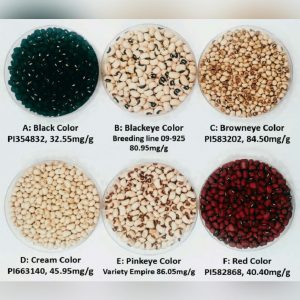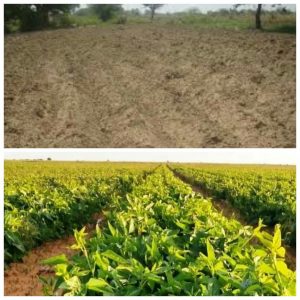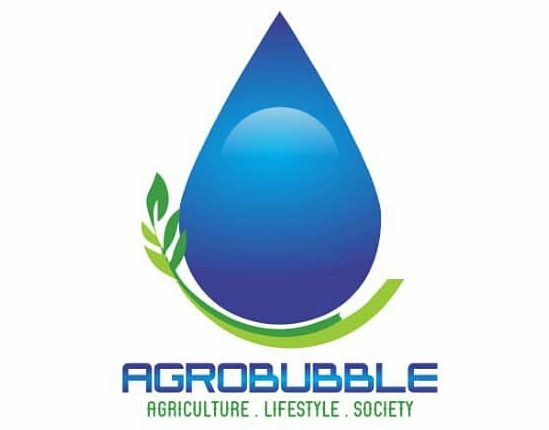Agriculture
Cowpea Production: Reasons Why Its Getting More Popular In The Past Decade
When talking about Cowpea Production, it is necessary to pay close attention to all the details that will be discussed, not neglecting the types of cowpea, to have full knowledge on what the term is all about as well as having full insight on the varieties of cowpea. See Also: Pawpaw Fruit: High Value and […]

When talking about Cowpea Production, it is necessary to pay close attention to all the details that will be discussed, not neglecting the types of cowpea, to have full knowledge on what the term is all about as well as having full insight on the varieties of cowpea.
See Also: Pawpaw Fruit: High Value and Importance You should Know!
Nevertheless, cowpea is a very important crop in Africa. Information on the production constraints and farmer’s views, perceptions, and variety preferences in Zimbabwe ( case topic) are not yet fully documented.
What is Cowpea?
The Cowpea (Vigna unguiculata) is an annual Herbaceous Legume from the genus Vigna. Due to its tolerance for sandy soil and low rainfall, it is an important crop in the semiarid regions across Africa and Asia.
It requires very few inputs, as the plant’s root nodules are able to fix atmospheric nitrogen, making it a valuable crop for resource-poor farmers and well-suited to intercropping with other crops. The whole plant is used as forage for animals, with its use as cattle feed likely responsible for its name.
Cowpea is known as southern pea, black-eyed peas, green cowpea, black – eyed beans, black cowpea, China peas and marble peas. It is also the second most important food grain legume crop in tropical Africa.
Furthermore, it originated in Africa though the exact place of domestication is not well known. Ethiopia, Central Africa, Central and Southern Africa, and West Africa are considered as possible centers of origin.
About 80% of the world’s production is in Africa with Nigeria being the leading producer. It is an important food for humans and provides feed, forage, hay and silage for livestock and green manure and cover crops.
The dry seeds may be ground into meal or flour which is used in a number of ways. The fresh seeds and immature pods are eaten as vegetables. The young shoots and leaves are eaten as spinach.
Importance of Cowpea.
According to the International Journal of Agronomy, stated few importance of Cowpea I will be listing below;
- It is mainly consumed as dry grain or fresh vegetables. The grain contains high protein, carbohydrate, vitamins, and fiber.
- They improve the fertility of the soil in terms of nitrogen and phosphate.
- It has low fat content, which is important in the prevention of diverse metabolic and cardiovascular diseases.
- The amino acid and vitamin profiles of the grain supplement those of cereals.
- It is the cheapest in the smallholder farmer areas.
- The consumption of cowpea as a fresh vegetable has rapidly increased in the semi-arid zone of Africa, especially Senegal.
- In some cropping systems, it can be used as cover crops and these can suppress pests, many plant pathogens including nematodes, and increase carbon sequestration.
- The early-maturing cowpea varieties are important as they provide food during the ravenous time of August and September, before other crops such as pearl millet, sorghum, and other landraces of cowpeas and peanuts are harvested in October.
- The roughage is utilized as food for animals during the long dry season in the semi-arid areas and to fatten small ruminants in anticipation of different celebrations.
- Some cowpea cultivars prevent the emergence of the seeds of Striga hermonthica, which parasitize pearl millet, sorghum, and maize.
SITE SELECTION FOR COWPEA PRODUCTION
Cowpea is a warm weather crop preferring temperature of 20-35°C for optimum growth.
The most cowpea crops are produced under rainfed farming.
The crop is also grown on soils with high water holding capacity (under residual soil moisture or under irrigation when the cold season crops like wheat are harvested).
Also, It is grown over a wide range of soil types provided drainage is good.
But for optimum yields light sandy loans are preferred.
VARIETIES OF COWPEA
Examples of common Cowpea varieties includes:–
- SAMPEA-7 (IAR 48)
- SAMPEA-8 (IT93K-452-1)
- SAMPEA-9 (IT90K-277-2)
- SANPEA-10 (IT97K-499-35)

Image source: Researchgate.net
CROPPING SYSTEM
Here, It is usually intercropped with crops like Millet, sorghum, and maize but can be grown as a sole crop.
In the traditional cereal farming system, it are inter-planted about 6-10 weeks after cereals are sown.
It is recommended that the cowpea should be relay cropped after the cereals have been weeded and earthen up.
Some advantages are associated with this system.
The spreading growth of the cowpea mothers weeds, protecting the soil from impact of heavy rainfall and it is likely that the cereal derives some nitrogen from the root nodules of the Cowpea especially towards the ends of the growing season.
Similarly, the roots of the cowpea also excrete a substance that stimulates germination of parasitic witch weed (striga); therefore it is useful as a trap crop.
In rotation systems it provides disease break in cereals or tuber crops as diseases that commonly attack cereal and tuber crops do not affect cowpea.
Spare time to read this amazing post on food Safety Here.
LAND PREPARATION FOR COWPEA PRODUCTION
Land preparation depends on the cropping system (whether the crop is grown sole or intercropped).

If it is intercropped no serious land preparation is needed but when grown as a sole crop, good land preparation is required.
PLANTING DATES, TIME AND METHODS
Time of sowing depends on the ecology and should be such as to enable the crop to flower close to the end of the rainy season so that the grains mature in dry weather.
In Nigeria, it is sown end of June to early-July in the Sudan zone, mid-July in Northern Guinea savannah.
Mid – to late -July in the northern others part of the southern Guinea savanna and as soon as the late season rain starts in the southern part of the southern Guinea savanna and about mid-August in the derived savanna and rainforest zones.
Sowing should be done in moist soil at 10-30 cm intra- row and 60-90cm inter-row depending on the type of cowpea.
Erect types are sown at closer spacing than the spreading types.
The seed rate for spreading types is 10-15 kg/ha and is 25-30 kg/ha for erect varieties.
Sow their seeds per hole and thin to two plants per stand at 2WAS.
On a land down with Cowpea for the first time, it should be inoculated with a fresh culture of it’s bacteria for proper root nodulation and nitrogen fixation.
Inoculation should be done before sowing.
It germinate normally within three days.
SOIL MANAGEMENT FOR COWPEA PRODUCTION
- It strives well under good soil conditions.
- It also requires loamy or sandy/loam soils.
- It is also important to grow Cowpea in rotation with cereal crops to provide natural soil enrichment.
- It is recommended to apply 5-10 tons of Farm Yard Manure in order to improve soil nutrients, texture and structure.
INTEGRATED SOIL FERTILITY MANAGEMENT
Where Cowpea is grown in mixtures (intercropped) it comes late and the fertilizer applied to the main crop will meet the cowpea requirement. But when sown for the first time in the field or where the soil is nitrogen deficient, application of a starter dose of N at 20 kg/ha is necessary.
It has a high requirement for P particularly towards the end of the growing period. This is because 80% of the total P uptake is absorbed in the last 30 days of growth and is mostly translocated to the seeds.
There is no response of K fertilizers in most savannah soil because of high K- status.
However, it has a high K requirement and the general fertilizer recommendation is 20 kg N, 40kg P2O5 and 20kg K2O per ha.
The fertilizer is applied at sowing but not beyond 2 WAS.
N application should not be delayed because it will interfere with the natural process of N-fixation in the root nodules.
WATER MANAGEMENT FOR COWPEA
Here, it requires relatively less water compared to maize and rice.
It also requires an annual rainfall of 500 to 600mm.
WEED MANAGEMENT
It must be kept weed-free during the early growth stages before attaining full cover especially when grown as a sole crop.
Weed control is achieved by hand pulling, hoe weeding at 3 and 6 WAS or with animal drawn implements or herbicides such as Metolachlor + Prometryn @ 2 kg a.i/ha P.E (1 ¼ *MTM in 10 liter-Knapsack Sprayer), Metolachlor (1.5kg a.i/ha) + Diuron (0.6kg a.i/ha) P.E ( ¾ + ¼ *MTM in 10 liter-Knapsack Sprayer), Metolachlor + Metobromuron (2-3 kg a.i/ha) PE ( 1 ¼ *MTM in 10 liter-Knapsack Sprayer).
Read Also: How Much Do You Know about Rice Production?
SAFETY USE AND HANDLING OF PESTICIDES
Precautions must be followed to ensure safe use of pesticides.
Even after use, the empty containers must be disposed of very well by burying them.
Instructions as stated on the label of the pesticides must be followed while only trained personnel should apply pesticide at recommended rate.
The personnel should also wear protective clothing during application of pesticide.
COWPEA HARVESTING
The harvested pods must be dried to reduce the moisture content of the seeds to 10% for safe storage.
Thoroughly dried pods are easily threshed by hand (sticks) or with a conventional thresher.
NB: Thresh on mat or tarpaulin to avoid contamination with stones and other foreign objects.
STORAGE
- Cowpeas are susceptible to storage weevil and other insects.
- Timely harvesting will minimize the damage since infestation often begins on the field where eggs are laid before taken away for storage.
- All containers and storage structures should be clean.
- Air-tight storage structure should be clean.
- Air-tight storage is environmentally safe and friendly and proven to be effective.
- As much as possible avoid the use of chemicals during storage.
Where the use of chemicals becomes necessary, then use organic products where available otherwise use synthetic pesticides with the highest LD values and least risks to farmer and consumer.
Ensure that farmers comply with the instructions on the labels and observe the warning periods before taking their stored produce to markets.
What are your suggestions? Please use the COMMENT section below.
